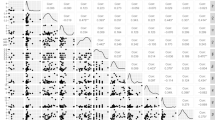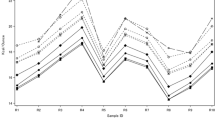Abstract
Summary: The concentration of iron in cow's milk, 0.40–0.59 μg/ml, was found to be very similar to that of human milk, 0.20–0.69 μg/ml. The copper concentration of cow's milk (0.06–0.09 μg/ml) is lower than in human milk (0.24–0.50 μg/ml) whereas the concentration of zinc is higher in cow's milk (3.23–5.15 μg/ml) than in human milk (1.16–3.83 μg/ml). Cow's milk contains about 4–5 times more calcium and magnesium, 854–1430 μg/ml and 87–131 μg/ml, respectively, than human milk (220–252 μg/ml and 26–35 μg/ml). Cow's milk was fractionated and the trace element and mineral contents of the different fractions were compared to results from human milk. The casein fraction in cow's milk contains a large proportion of the total amounts of the elements cited above (Fe 24%, Cu 44%, Zn 84%, Ca 41%, Mg 25%) whereas human casein only binds minor amounts (Fe 9%, Cu 7%, Zn 8%, Ca 6%, Mg 6%). Whey proteins bind a major part of these elements in human milk, but not in cow's milk. Significant amounts of iron are bound to the lipid fraction in both cow's and human milk (14 and 33%, respectively), predominantly bound to the outer fat globule membrane. Low molecular weight compounds (ligands) bind significant proportions of all the elements investigated in both cow's and human milk, with the exception of zinc in cow's milk, of which only 2% is associated with this fraction.
The differences in trace element bioavailability observed in infants fed human milk versus cow's milk (formula) may therefore be explained, in part, by differences in ligandbinding; the differences in distribution between the casein and whey proteins may be especially important. It is possible that casein may act as a limiting factor for the absorption of trace elements and minerals in the newborn infant with limited digestive function.
Similar content being viewed by others
Article PDF
Author information
Authors and Affiliations
Rights and permissions
About this article
Cite this article
Fransson, GB., Lönnerdal, B. Distribution of Trace Elements and Minerals in Human and Cow's Milk. Pediatr Res 17, 912–915 (1983). https://doi.org/10.1203/00006450-198311000-00015
Issue Date:
DOI: https://doi.org/10.1203/00006450-198311000-00015
This article is cited by
-
Different content of cholesterol, retinol, and tocopherols in human milk according to its fat content
European Food Research and Technology (2021)
-
Sensory evaluation and storage stability of UHT milk fortified with iron, magnesium and zinc
Dairy Science & Technology (2015)
-
Association of Serum Concentrations of Magnesium and Some Trace Elements with Cardiometabolic Risk Factors and Liver Enzymes in Adolescents: the CASPIAN-III Study
Biological Trace Element Research (2015)
-
Hohenheim Consensus Workshop: Copper
European Journal of Clinical Nutrition (2002)
-
Uptake and retention in suckling rats of51chromium fed with human milk or infant formulas
Biological Trace Element Research (1996)



